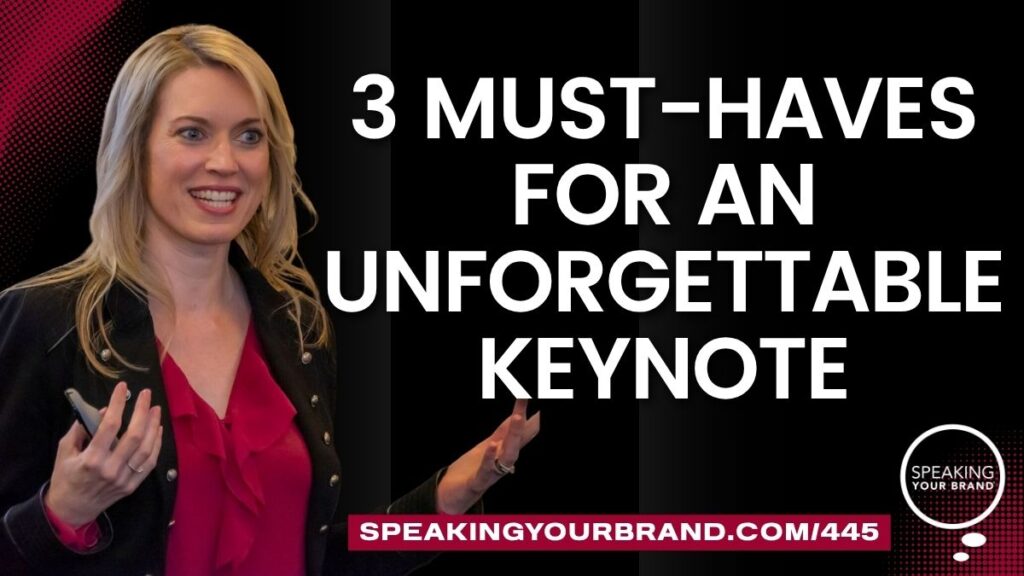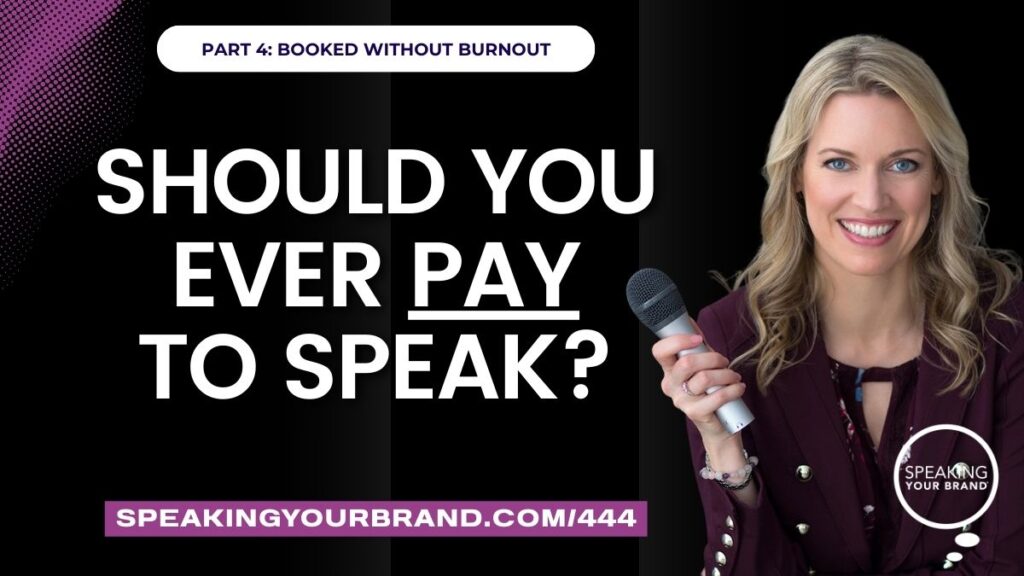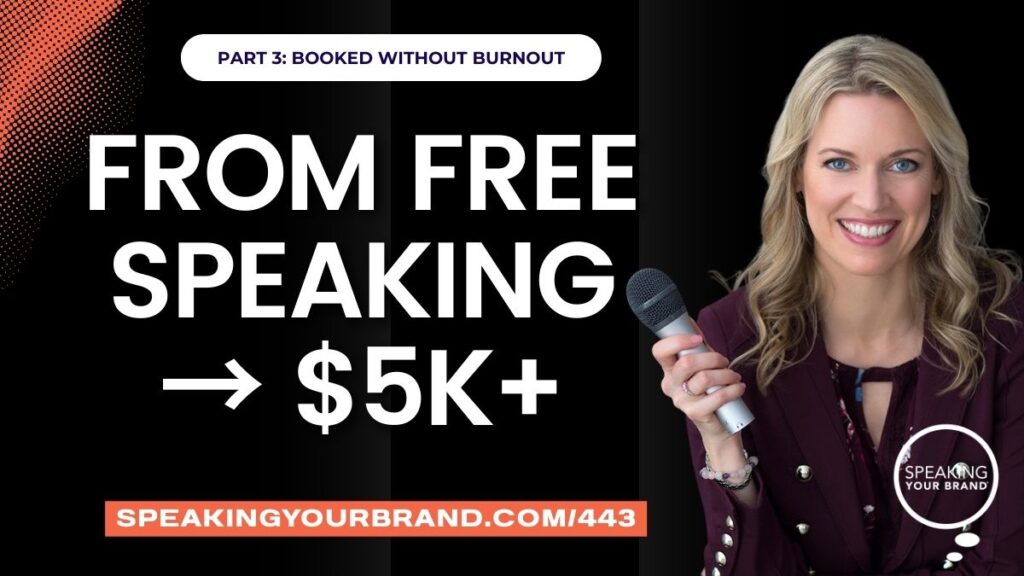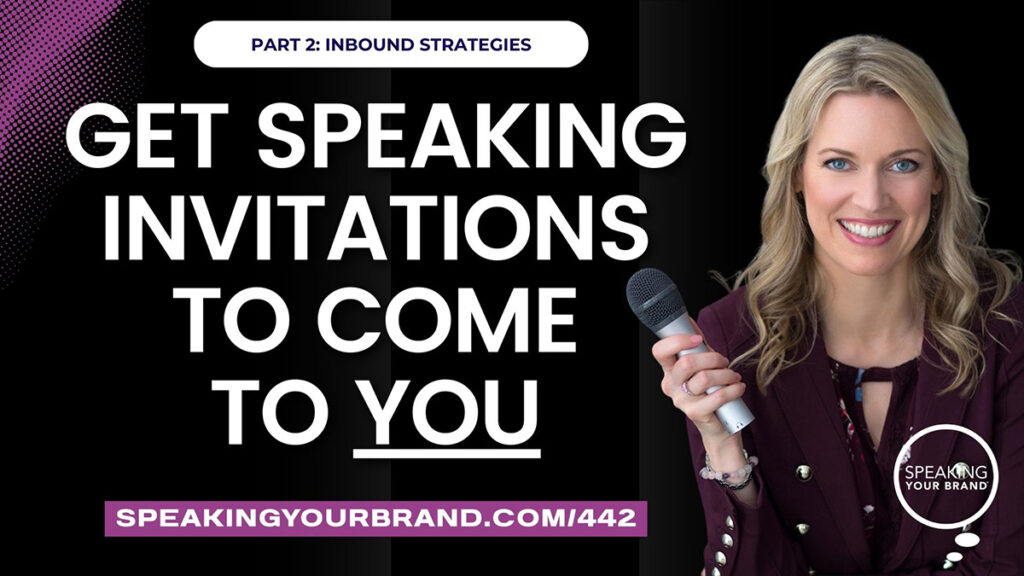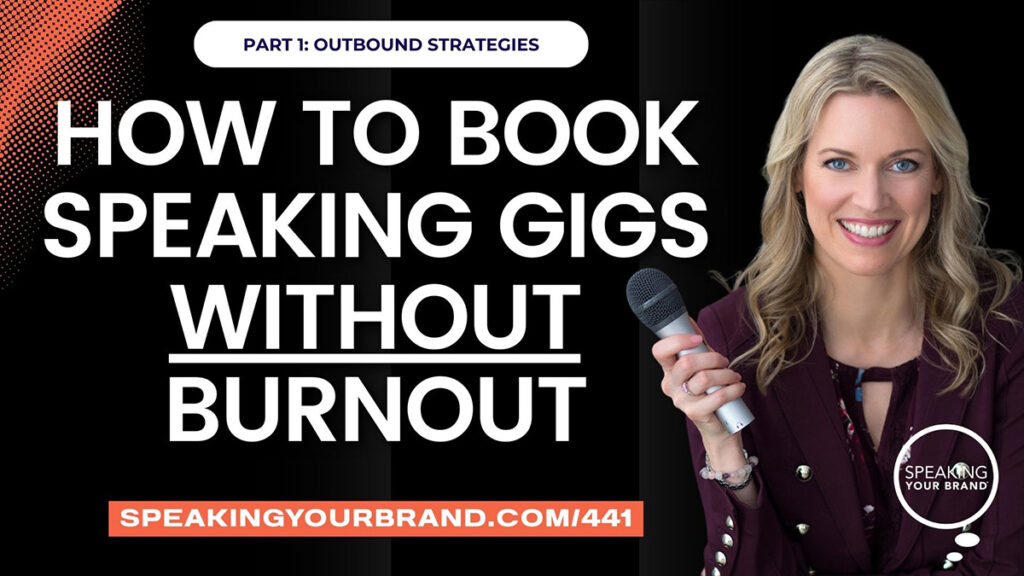445-Solo-Keynotes-v2.mp3: this mp3 audio file was automatically transcribed by Sonix with the best speech-to-text algorithms. This transcript may contain errors.
Carol Cox:
Hear why you don’t want your audience to say I learned a lot at your next keynote. Instead, here are three must-haves to make your keynote unforgettable, on this episode of the Speaking Your Brand podcast.
Carol Cox:
More and more women are making an impact by starting businesses, running for office, and speaking up for what matters. With my background as a TV political analyst, entrepreneur, and speaker, I interview and coach purpose driven women to shape their brands, grow their companies, and become recognized as influencers in their field. This is speaking your brand, your place to learn how to persuasively communicate your message to your audience.
Carol Cox:
Hi there and welcome to the Speaking Your Brand podcast. I’m your host, Carol Cox. I hope you enjoyed the four part series that we just finished up called Booked Without Burnout. There are short, actionable episodes to help you book more speaking engagements with outbound strategies, inbound strategies, how to get paid to speak, and even if you should ever pay to speak. So definitely go back and check out that series. Today, I’m taking you behind the scenes of a keynote I recently gave at a conference for their women’s luncheon. The title of my talk was From Invisible to Influential how I Found My Voice and Why Yours Matters More than Ever. So yes, very much right up my alley. It was a great event and as I reflected afterwards, I realized that there were three big strategies that can help you the next time you’re preparing a keynote.
Carol Cox:
Here’s what women said to me afterwards. They said it was inspiring. They said it was phenomenal. They said it was excellent. They told me that they really resonated with my story, even though they hadn’t been in the exact situation I had been in. They understood what it felt like to use your voice and then lose it and then regain it again. A couple of women also like me, said that they’re introverts, and they were really inspired that I shared how I was an introvert, but I still found a way to use my voice. And now they believed they could too. Now here’s what women in the audience didn’t say to me afterwards. They didn’t come up to me and say, I learned a lot, or thank you for all of those tips and tactical things that you taught me. You do not want to hear that after you deliver a keynote. That is what I call being stuck in the expert trap, especially when delivering a keynote. Because in a keynote you don’t want to inform, you want to transform. But I know that we’re so used to giving presentations, whether they’re in person or virtual, that we kind of get stuck in this training and teaching mode, where we just want to give them a whole bunch of information, a list of things that they can do to improve themselves. But that’s not what a keynote is for. A keynote is to provide an experience for the audience, to help them to see something differently about themselves, or their industry, or their world or all three, and to have them believe that they can do it.
Carol Cox:
There are three strategies that you can use to make this happen. I love working with our clients on their keynotes because I enjoy pulling out of them, not only their ideas and the lessons they’ve learned in their careers and in their businesses, but also their stories and connecting what’s meaningful about their story, about their journey to these lessons that they want to share with their audience. If you would like to work with us to create your incredible keynote talk, your Ted talk, or your lead generation presentation, we can work with you on any of those or all of those. Go to speaking your Brand.com and schedule a call with us. I always enjoy talking to podcast listeners and I would love to hear what your goals are, what you’re working on, and potentially how we could work together. Now let’s dive into these three strategies that you can use to make your keynote not only unforgettable, but also impactful for your audience. Strategy number one is storytelling at the core. And I know if you’ve been listening to this podcast, I talk quite a bit about the importance of storytelling. When you’re giving a keynote, I know the temptation is to fill it with tips, tactics, and takeaways, especially, like I mentioned, if you’re used to teaching workshops or giving trainings, but your audience doesn’t need more information, especially if you’re doing a keynote.
Carol Cox:
They want to sit back, they want to relax, and they want to have an experience. So I want you to focus on creating connection and transformation. And that happens through story. In the keynote that I gave recently. And I have shared this particular story in other keynotes that I’ve delivered as well, came from a time earlier in my career When I was involved in politics for a while, everything was great until it wasn’t because I became a woman with too much of a public voice and a public presence, and the people who had been my biggest supporters and cheerleaders all of a sudden were not. I was bullied, I was undermined, and I really felt so alone and so vulnerable that I ended up not running for re-election as chairperson and not eventually running for Congress. And it was really devastating. And I lost my voice for many years after that. Now, this story does not make me feel like the empowered woman that I imagined myself that I was back then, or that I like to think that I am now. But the story is really real. It happened to me. And even though I know most of the time in the audience, there aren’t women who have had that exact same experience. They may have had something similar. I took that story that I told relatively early on in the keynote. So this was in act one of our three act framework.
Carol Cox:
And then I drew three lessons from that story that I shared with the audience. So this is really key. You don’t just tell a story just for the sake of telling a story. You’re sharing a story because there’s lessons that you’re drawing from it that are going to be helpful to the audience. So your keynotes are still really helpful and impactful, but they’re not tips and tactics. So when you’re thinking about your next keynote or that style of talk, ask yourself, what’s the story that you could share? What’s a moment in your life or your career? When things shifted now, they could have shifted in a way that you didn’t necessarily like at the time, like what happened to me, but you learned something from that. So how can you share those learnings with your audience? That is the core of storytelling in your keynote. So that brings us to strategy number two, which is structure. So now that you have decided which story is the best fit for that keynote, for that event, for that audience, then you want to structure your keynote with the rule of three. So now you are in act two of our three act framework. And so in that, act two is where you’re kind of getting into the meat of your talk. So instead of just dumping a whole bunch of information on your audience or a whole bunch of just kind of random lessons, you want to organize your talk around this rule of three.
Carol Cox:
So it could be three lessons, three principles, three pillars, or even three stages of a journey that people go through as they learn the lessons that you learned from your story. So for my story that I shared, I pulled out three lessons that the audience could apply to their own lives. And because it was three, not seven or not ten, it was easy for them to follow, remember, and then think of afterwards. So in my case, the three lessons that I shared were number one to know your why and your goal. So you, as the person who is using your voice as the person who’s communicating, what is your North star? What is it that matters to you? Kind of your mission and your vision, your bigger why and the goal that you have. Because when I was telling that story about what happened to me in politics, I kind of forgot about my bigger why. When I got it, when I got sucked into what was going on, and I really felt so alone and didn’t know what to do. And then the second lesson that I shared was, okay, it’s fine to know your why and your goal, but you also have to know your audience’s why and their goal and what they want from communication, because kind of the larger umbrella topic of this particular luncheon was about communication. So I had what is it for you? And then what is it for the person on the other end, whether it’s one person or a group of people that you’re talking to? So that was a second lesson.
Carol Cox:
And then the third lesson was the importance of sharing stories, because of course, that’s what I’m going to talk about is storytelling. I took my very particular story, but then I found these three universal lessons to pull out of it. So when you’re working on your keynote, resist the urge to say all the things or to draw a whole bunch of different lessons from it instead. Think of three key things three lessons, three principles, or three stages that you can share with your audience. Strategy number three. And this is one I feel like a lot of keynote speakers forget to do if it doesn’t come naturally to them, is humor and audience participation. If you’re used to giving workshops, you’re probably used to having the audience interact with you, especially if you’re doing workshops or maybe 20 or up to 50 people. It makes it a little bit easier to have audience participation because it’s expected with the keynote. Audience participation is more unusual, especially at a luncheon. Fortunately, when I started my delivery, they had already finished lunch. They were kind of starting on dessert. It’s really hard to be a keynote speaker when people are eating lunch, like actually eating the main course. If that is the situation you find that you might be in.
Carol Cox:
See if you can talk to the event organizers about adjusting the timing so that at least you’re starting your talk when they’re kind of finishing clearing the main plates, because otherwise you’re competing with, you know, clinking of the silverware on the dishes. Okay, so they had finished their main meal and they were kind of putting having dessert. So when I started my talk, I had an exercise, an audience participation exercise right away where I divided the room into two sides, one side on the right, one side on the left. And then I had them sing the song that I sing along with them. Very well known children’s song. And then once I did one thing and one side, then the other, I’m not going to spoil it because you may see me speak one day in the future, but it was a lot of fun and the audience did it. And then I asked them questions about how it felt to be on one side versus the other. And so it was a fun way to get them involved right away, to kind of get them focused on me in the front of the room instead of on the food that they were eating. And then at the very end of the talk, I brought it back to what we had started with at that, beginning with that exercise. And so I had everyone stand up and do this fun thing. Again, I’m not going to spoil it here with what exactly it was, but it was energetic.
Carol Cox:
It left the keynote on a high, and it got the audience involved from the very beginning until the end. So just because you’re delivering a keynote, just because you’re delivering a keynote at a luncheon, just because you’re delivering a keynote to a large room does not mean you can’t have audience participation. You can. Now, the next part of this third strategy is humor. Humor is so important for every talk that you give, especially for keynotes, because again, keynotes are not about trainings. They’re not about a whole bunch of tactical things that you’re giving people. They’re about an experience. And the way that audiences remember things is through emotion. Emotion could be wistfulness. It could be nostalgia. It could be a little bit of not not. You don’t necessarily want to make your audience sad, but you could have a story that’s a little bit heavier. And then especially you have to make sure that you lighten the tension with humor. Usually I will naturally say something funny just in the course of delivering my talk, but I don’t leave that up to chance. What I do is, after I’ve created the outline for my keynote using our signature Talk Canvas framework, and then I start working on the slides, then I go back through the slides, and I find places where I can intentionally add humor, because if I don’t, I may forget it. Or I just may kind of just say something as an aside, but it doesn’t really have the impact as actually seeing something on a slide, like a funny GIF or a funny image or a funny video clip.
Carol Cox:
So I go back through my slides and I try to find at least two, if not three places where I can add slides that have something humorous on them. So in this case, I had a couple of funny memes. Funny GIFs and funny memes are a great way to easily add humor to your talk. Now for the humor. You’re not making fun of the audience. You’re not making fun of their industry or the work that they do at all, unless you are one of them. If you are also, say, a physician and you’re talking to a room full of physicians, yes, use appropriate humor that they would find funny. Now, if I’m talking to a room full of physicians and I, clearly I am not, I would not make a joke about physicians because I don’t I don’t really think that’s appropriate, and they probably wouldn’t find it that funny. Instead, I like to use self-deprecating humor because that makes me more relatable to the audience, but not self-deprecating humor that harms my credibility. We did a whole episode about this earlier this year. I’ll put a link in the show notes about how to use self-deprecating humor appropriately, but that is really effective. And of course, you never want to make fun of someone, so I never do that.
Carol Cox:
I really do it in kind of pulling aspects of my story or the lessons that I learn and using that self-deprecating humor. In that way, when you use humor and audience participation, it shifts the energy. It creates connection between you and the audience and the audience with each other. And it really does make your talk so much more memorable and impactful. So as you start working on your keynote, use our signature Talk Canvas framework. I’m going to put a link in the show notes to an episode that I did, where I explained the entire framework so you can use it. Put storytelling at the core. Think of that story that really impacted you, that shaped you, that would be relevant to the audience and to the topic that you’re talking about. Use a clear structure, that rule of three. So three lessons, principles or stages and intentionally add humor and audience participation into your keynote. That’s what’s going to leave your audience transformed. Creating and delivering a keynote is not only an incredible opportunity, It’s also a responsibility. You want to deliver an impactful and memorable experience for the audience, and of course, have the event organizers look great. I love working on keynote talks with our clients because I serve as your thought partner and your creative partner. We have sessions on zoom where we map out your talk using our unique and proven signature Talk Canvas framework. We’ve used this framework for hundreds of our clients talks as well as our own.
Carol Cox:
So I’m asking you questions about your stories, about your thought leadership, ideas about the conversations that you want to contribute to that are going on in your industry, in your topic area. And then I map out with you your entire talk from beginning to end, that compelling opening with the closing that ties it all together, and then taking the audience on that journey of the lessons, the principles or the stages that you want to share with them. It truly is a co-creative partnership between me and you. We find places to add humor and audience participation so that you have a keynote talk that you love, that you’re confident delivering, and that truly feels like the message that you want to share. Whether you’ve been asked to deliver a keynote already in the date is on the calendar, or you know you want to be a keynote speaker, that you have a message that you would like to share with more audiences. I would love to talk with you about working together. The best thing to do is to schedule a consultation call with me. You can do that by going to speaking your consultation. Again that’s speaking. We’ll spend about 30 minutes together on zoom so I can get to know what you do, what your topic is, what you need the most help with and how we can work together. Again, go to speaking. Com to schedule that consultation call. Until next time. Thanks for listening.
Sonix has many features that you’d love including enterprise-grade admin tools, automatic transcription software, generate automated summaries powered by AI, powerful integrations and APIs, and easily transcribe your Zoom meetings. Try Sonix for free today.

